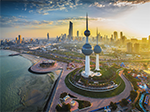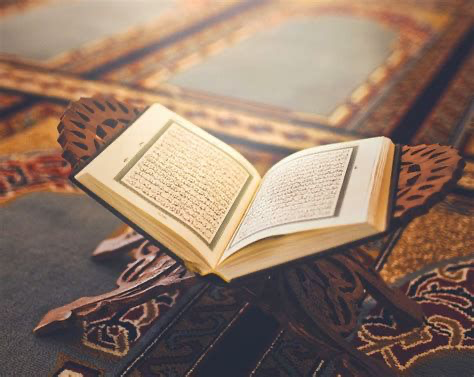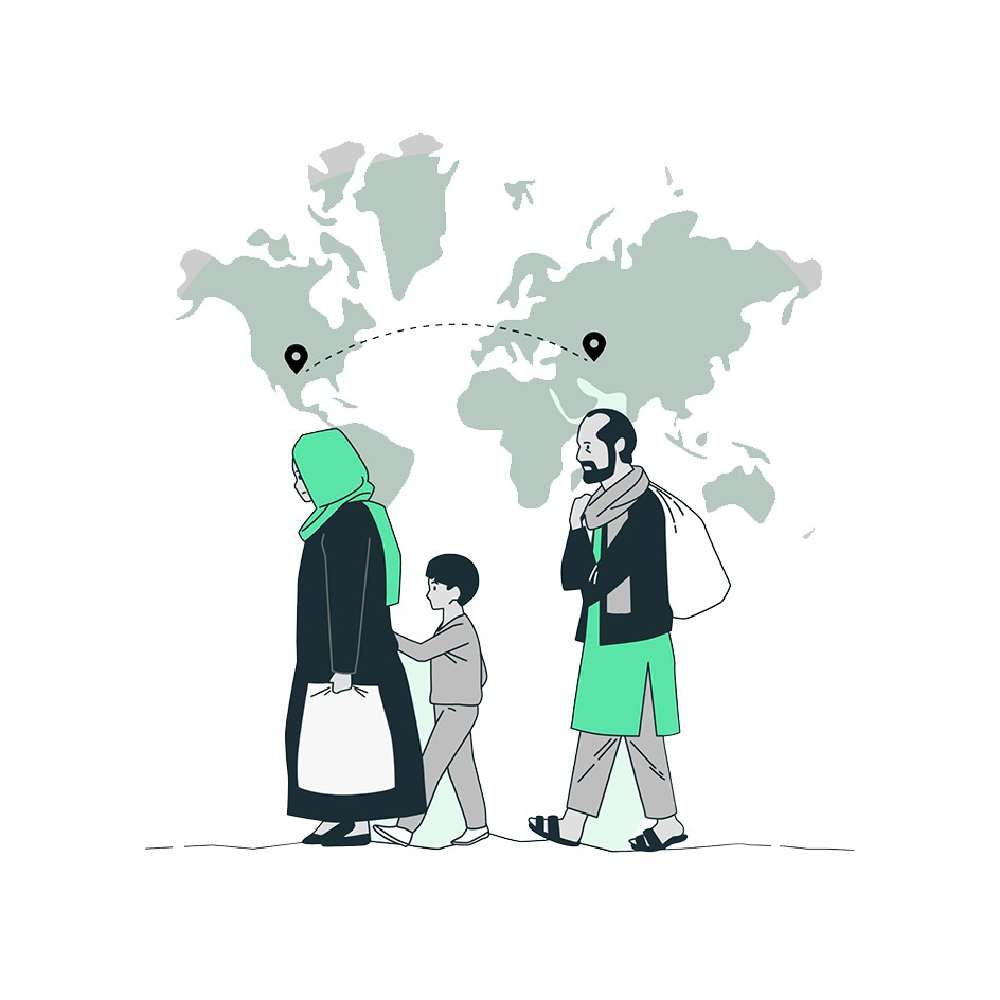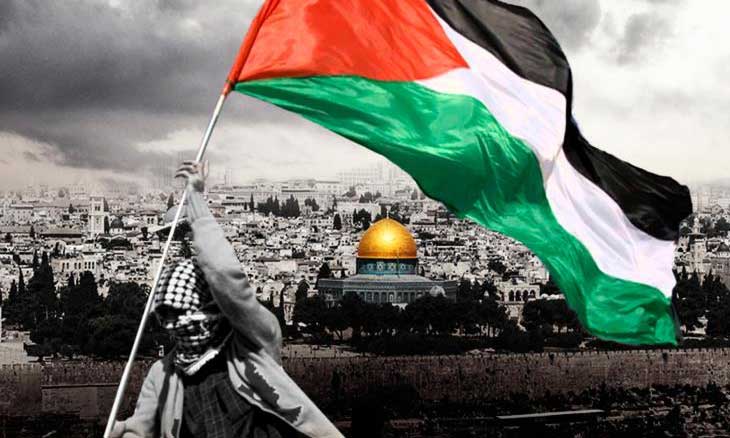Occupation rabbis at the heart of the Judaization project of Al-Aqsa.
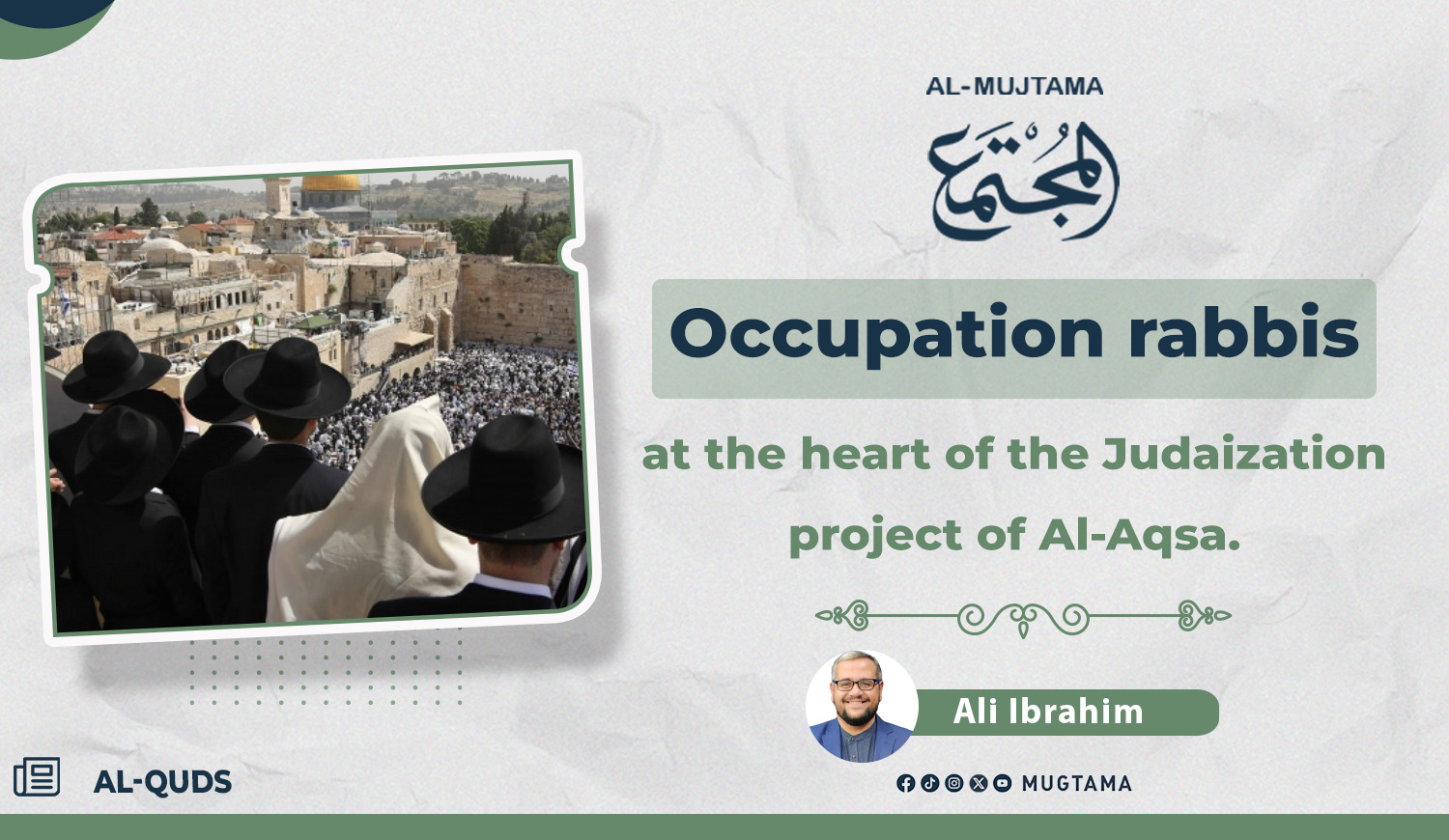
The
dangers threatening Al-Aqsa
Mosque are no longer limited to almost daily incursions. What these
incursions entail in terms of desecration and aggression has exacerbated these
dangers, especially as they have been accompanied by a rise in the imposition
of public Jewish rituals and attempts to increase the number of intruders
coinciding with Jewish holidays. This is also connected to the demands of
"Temple organizations" at the political level, aiming to open the way
for Al-Aqsa incursions throughout the day and introduce sacred tools for
performing public rituals, among other things.
There's
no doubt that a key player stands behind these schemes, one who seeks to link
them with ideas of salvation and invoking divine victory, among others. These
are the rabbis of extremist groups. In this article, we shed light on their
role in propagating the idea of the "Temple" within the occupation's
various levels, connecting it to biblical religious prophecies, and their
direct aggression inside Al-Aqsa.
The Rabbis...
and the Establishment of Extremist Organizations
Rabbis
played a prominent role in the establishment of these extremist organizations,
and this role was not only linked to the current organizations but also to the
ideological roots of these organizations. These roots can be traced back to the
Bnei Akiva (1) group, which was founded by Rabbi Moshe Tzvi Segal in 1937.
Sources
indicate a connection between many temple organizations and the Gush Emunim
settlement organization, which was established after the occupation of
Jerusalem in 1967. It was founded by Rabbi Moshe Levinger. After the
organization was halted in 1984(2), its ideas remained present in the Yesha
Council, which included the settlements in the West Bank and Gaza Strip at that
time, as well as in the Hilltop Youth movement that was established following
the withdrawal of the occupation from the Gaza Strip.(3)
In
addition, a number of "Israeli" parties adopted the ideas of this
organization, such as the Jewish Home party, and were among the first
institutions specialized in establishing the "Temple" Institute
founded by Rabbi Yisrael Ariel.
Hebrew
sources indicate that most of the officials of the "Temple
Organizations" are Ashkenazi Orthodox rabbis, part of what is known as the
religious Zionist movement. Among the most prominent of these is Rabbi Chaim
Richman, director of the international department of the "Temple
Institute," in addition to the two extremist rabbis Yehuda Glick and
Yehuda Atzion, among others.
Read
also: The stages of the Zionist occupation of Jerusalem
A rabbinical
parliament seeks to build the temple.
According
to the Encyclopedia "Jews and Judaism" by the late Dr. Abdel Wahab
El-Messiri , the "Sanhedrin" is the highest judicial body responsible
for handling political, criminal, and religious cases in the areas where Jews
lived. It was the highest judicial authority in ancient times, having the final
say in interpreting and issuing laws. The council consists of 71 members.(4)
As
the agendas of the "Temple" have escalated under the occupation, 71
Jewish religious leaders re-established the "Sanhedrin" on October
13, 2004. Although it lacks any authority to address political or religious
matters, the new council defines itself as the rabbinical Jewish parliament and
focuses its efforts on identifying the location of the Holy of Holies,
restoring Jewish worship and rituals to the Temple, particularly the offering
of animal sacrifices, and searching for animals that meet the conditions for
sacrifices. The council contributes to training settlers in these rituals and
reviving the priestly class of the Temple.(5)
Some
researchers consider that the new "Sanhedrin" has become the rabbinical
authority for extremist organizations, representing a gathering of what is
known as "religious Zionism." Its diligent work supports the
propositions of "Temple organizations," including the participation
of its rabbis in storming the "Al-Aqsa" mosque, sending messages to
the leaders of the occupation regarding the establishment of the
"Temple," and even creating tools for Jewish rituals. This was
exemplified on September 9, 2022, when a leader of the new
"Sanhedrin" announced that they had completed the making of a
"shofar"(6) that meets biblical specifications.(7)
The
Sanhedrin approves the raid on Al-Aqsa
One
of the most prominent issues the "New Sanhedrin" is working on is
changing the official rabbinic fatwa (religious edict). The official rabbinic
authority still prohibits Jews from participating in Al-Aqsa incursions due to
the absence of the purity requirement and other religious considerations.
Therefore,
religious Zionism is mobilizing a large number of non-traditional and
non-Orthodox rabbis to achieve a breakthrough in the official religious ruling.
Their aim is to approve a religious opinion that permits Al-Aqsa incursions,
while simultaneously working to fulfill the conditions of purity through the
"Red Heifer" rituals (8).
The
"Sanhedrin" periodically renews the fatwas (religious edicts) related
to the permissibility of storming Al-Aqsa. Among the latest published by Temple
organizations was a letter affirming the lawfulness of storming Al-Aqsa on July
9, 2020. The letter included signatures from approximately 60 rabbis,
authorizing the desecration of Al-Aqsa and urging its storming. Among the
signatories were Rabbi Nahum Rabinovich, head of the Barkat Moshe settlement
religious school in Ma'ale Adumim (9), and a number of students of Rabbi Zvi
Kook, Rabbi Yisrael Ariel (10), Rabbi Eliezer Waldman, and others.
The
year 2024 witnessed a notable development represented by the attempts of
"Temple organizations" to reach the top of the official rabbinate
hierarchy, pushing central members to become part of the higher official
rabbinical councils. They worked on nominating Rabbi Meir Kahane as a candidate
for the Ashkenazi rabbinate, and Yehuda Hayek as a candidate for the Sephardic
rabbinate. However, the election results indicated that they failed to attain
the position, with indications of one or more members leaning towards the
opinion of the "Sanhedrin" and supporting incursions into the
"Al-Aqsa" Mosque before achieving purification.
Read
also: 7 Zionist policies for the Judaization of Al-Aqsa
Mosque Palestine
The
participation of the rabbis in the aggression against 'Al-Aqsa
Despite
all the efforts made by the rabbis in the context of achieving their goals,
they have an active role in desecrating Al-Aqsa Mosque and storming its plazas.
They lead groups of intruders, provide Talmudic explanations, and conduct
public Jewish rituals in the eastern courtyards of Al-Aqsa, culminating in what
resembles a rabbinical summit.
On
April 3, 2022, a group of senior rabbis from the occupation participated in the
storming of Al-Aqsa Mosque. The incursion included discussions on preparations
for the Passover incursions. Rabbis from various extremist organizations,
settlements, and religious institutes took part in the incursion, alongside the
new "Sanhedrin." Among the prominent participants were: Yisrael
Ariel, the spiritual leader of the Temple organizations and founder of the
Third Temple Institute and head of the Temple Mount School, Rabbi Yaakov
Haiman, head of the Temple Organizations Coalition, and several leaders of
extremist rabbinical organizations.
On
October 13, 2022, the "Al-Aqsa" witnessed a second summit, attended
by Rabbi Shaul Buchico, Rabbi of the settlement of Kochav Yaakov, Rabbi Shlomo
Wilk, head of the Stone of the Torah school, and Rabbi Yehuda Shalosh from
Netanya, one of the senior rabbis of the new "Sanhedrin
In
the past weeks, Al-Aqsa Mosque has witnessed the leadership of the extremist
rabbi Yehuda Glick, who accompanied waves of foreign tourists while they
desecrated several locations within the mosque. With the continued leadership
of rabbis in performing public rituals and accompanying political figures
during incursions, the mosque has seen older rabbis deliberately sit in various
areas of Al-Aqsa in the past months.
On
February 18, 2025, the extremist rabbi Daniel Shilo (87 years old) stormed
Al-Aqsa, sat on the platform in the eastern area, and performed his prayers
there accompanied by his followers.
On
May 5, 2025, a Zionist rabbi deliberately relaxed on the ground of
"Al-Aqsa," near the Cotton Merchants' Gate, during his incursion
along with some of his followers, while the occupation police surrounded him
for protection.
Will the Ibrahimi Mosque survive the grip of
occupation? | The full story
__________________________________
(1) A
Jewish movement that operated through the teachings of Yair Stern, whose
real name was Avraham Stern (December 23, 1907 – February 12, 1942), the
founder of the extremist Stern Gang (also known as Lehi, an acronym for
"Fighters for the Freedom of Israel") during the British Mandate era
in Palestine.
(2) Due
to an attempt by a number of its members to blow up the Dome of the Rock prayer
hall.
(3)
Inaam Hamed, Jerusalem Center, July 13, 2022, https://bit.ly/3yxFe1N.
(4)
Abdelwahab El-Messiri, Encyclopedia of Jews, Judaism and Zionism, electronic
version, https://tinyurl.com/yc7jre38.
(5)
Ritmyer, March 17, 2007, https://tinyurl.com/352nnma6 Louis Vega, The
Nascent Sanhedrin, p 7.
(6) It
is the horn used to announce the Hebrew New Year, and it is blown, according to
Jewish beliefs, inside the Temple. Its blowing carries many symbolic
connotations, including the imposition of Jewish sovereignty, the declaration
of victory, and so on.
(7)
Jerusalem City Website, September 14, 2022, https://qii.media/items/1794.
(8)
We covered it in the following article: https://tinyurl.com/ywdrynfs.
(9)
Signed it before his death in May 2020.
(10) One
of the key rabbis responsible for the revival of the "Sanhedrin."



